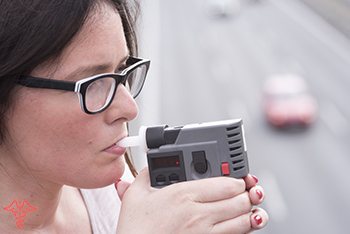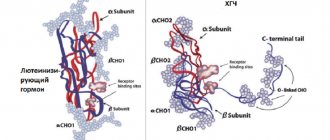Home>Articles> How long does alcohol stay in the blood?
Alcohol is a strong poison. When it penetrates the human body, it destroys any tissues and cells. The nervous system is subject to the most severe destruction. After alcohol enters the stomach, it is distributed through the bloodstream throughout the body. Alcohol lasts longer in some tissues. Some leave much faster. To understand how long alcohol stays in the body, it is necessary to understand the mechanism of its effect.
Phases of the effect of alcohol on the body
The mechanism of how long alcohol stays in the blood can be divided into three stages :
- absorption and entry into the bloodstream,
- oxidation of alcohol molecules,
- removal from the body.
The first phase begins after the introduction of alcohol into the body. It ends when the concentration is maximum. The duration of the first phase depends on the physical characteristics of the body, the state of the digestive system, the age and gender of the person, as well as on his constitution.
A blood test for alcohol shows that the removal of alcohol from the body and its neutralization begins as soon as it enters the bloodstream. Breathing and excretory processes can remove some of the poison from the body. But this is only a small part. The main volume of the substance taken is oxidized in the body and leaves it in the form of water and carbon dioxide. In this state, they linger in the human body much longer.
The time of alcohol in the blood and the period of its elimination depends on the speed of metabolism and the functioning of some internal organs. The liver bears the greatest load. It participates in the decomposition of alcohol and releases aldehydes and alcohol breakdown products into the blood. How long ethanol stays in the blood depends on the condition of the liver. The lungs are also involved in the process of removing alcohol from the body. Therefore, the speed of liberation from alcohol depends on their health. When taking the same dose with the same weight of a man and a woman, the female body remains under the influence of alcohol longer.
How long does alcohol stay in a person's blood?
Once in the body, ethanol is absorbed into the blood from the small intestine. With the bloodstream it spreads throughout the body, and in the liver the reaction of neutralizing it as a toxic substance is triggered. To do this, hepatocytes actively begin to produce alcohol dehydrogenase, an enzyme that decomposes ethyl alcohol into harmless components and toxic acetaldehyde. To neutralize the latter, another enzyme is synthesized - acetaldehyde dehydrogenase. It converts the harmful compound into harmless acetic acid.
Thus, the time it takes for alcohol to break down in the blood directly depends on the amount of these two enzymes. It is simply impossible to indicate an exact period; it is individual for everyone and, in addition to the enzymatic activity of the liver, depends on several other factors:
- the volume of drink and its strength - the higher these indicators, the longer it will take to neutralize ethanol and its decay products;
- body weight - the fuller, more massive a person is, the slower he will get drunk and the faster he will sober up;
- gender – women get drunk faster and stay sober longer, since less ADH enzyme is produced in the female body;
- age – a slowdown in metabolism over the years means a decrease in enzymatic activity;
- state of health - a body weakened by illness takes longer to process alcohol in the blood (this is especially true for chronic liver diseases - liver failure and other pathologies);
- the method of drinking alcohol - a large volume drunk at once (“in one gulp”) and the absence of a snack accelerates intoxication and makes it last longer.
Physical activity also affects the rate at which ethanol is eliminated from the body. Mobility activates metabolism, promoting faster sobering.
Therefore, as a result of a feast with dancing in the fresh air, the degree of intoxication is less, and sobering up occurs much faster.
Read further: Is it possible to drink alcohol before donating blood for analysis?
Men
The male body reacts differently to alcohol than the female body.
- Approximately 50ml of strong alcohol, such as cognac, will last for about 4 hours.
- Half a liter of alcohol will have an effect on the male body for 24 hours.
- One hundred grams of vodka is neutralized in about 5-7 hours.
- One bottle of champagne will stay in the body for 6 or 7 hours.
How much alcohol is removed from the blood, depending on the strength of the drink
The strength of the drink has a huge impact on how much alcohol comes out of the blood. The higher the degree , the more time it takes to neutralize it. Light drinks such as beer, wine, cocktails are easier to digest. They are eliminated from the body faster. And strong drinks such as vodka, tequila or whiskey stay in the body longer.
For example, when taking one hundred grams of vodka , its vapors will be felt when breathing for about one and a half to two hours . And drinking half a liter of beer will be felt by those around you for thirty minutes . Increasing the dose leads to a directly proportional increase in the withdrawal period. It is worth saying that the time of exposure to alcohol varies significantly depending on the person’s weight. The higher your body weight, the easier it is to tolerate a portion of alcohol. Drinking alcohol with fatty foods increases the period during which alcohol is removed from the body. Therefore, the answer to the question of how long alcohol stays in the blood when eating a large and high-calorie meal depends on the amount eaten.
The average rate of elimination of aldehydes and ethanol from the blood is approximately 0.2 ppm per hour.
What cancer diseases are associated with mutations in the ALK gene?
It is now known that changes in this gene occur not only in anaplastic large cell lymphoma, but also in a number of other malignant tumors: neuroblastoma, non-small cell lung cancer, renal cell cancer, squamous cell carcinoma of the esophagus.
ALK mutations in non-small cell lung cancer
Genetic rearrangements involving ALK occur in 3–7% of cases of non-small cell lung cancer. Moreover, most often these mutations are found in certain categories of patients:
- people who are not smokers or smoke rarely, a little;
- young patients;
- patients with malignant lung tumors, which, according to the results of histological examination, are classified as adenocarcinomas ;
- women;
- It is known that ALK mutations almost never occur together with EGFR and KRAS mutations.
For example, in 13% of cases with lung adenocarcinomas, a translocation (movement of a section of one chromosome to another) and/or a chimeric gene EML4-ALK is present. The EML4 gene encodes a protein similar to the echinoderm microtubule-associated protein. This association leads to excessive activation of ALK.
In what cases is an ALK mutation test prescribed for lung cancer, and what is it for?
According to the recommendations of the International Association for the Study of Lung Cancer (IASLC) and the European Society of Medical Oncology (ESMO), testing for ALK mutations should be performed in all patients with advanced lung adenocarcinoma. They are usually prescribed along with an EGFR mutation test or after it if it shows a negative result.
A study on ALK mutations helps to understand whether treatment with targeted drugs - ALK receptor tyrosine kinase inhibitors: crizotinib (Xalkori), ceritinib (Zykadia), alectinib (Alecensa) will be effective. These drugs help more successfully fight advanced ALK-positive non-small cell lung cancer and increase survival.
Mutations in the ALK gene in neuroblastoma
Neuroblastomas are malignant tumors of immature nerve cells, neuroblasts . They can develop in different parts of the body: the brain, nervous tissue of the neck, chest, abdomen, pelvis, adrenal glands. Neuroblastomas are most often diagnosed in children under 5 years of age. There are currently at least 16 known types of genetic defects involving the ALK gene that occur in such patients. These mutations can be either somatic, in sporadic cases of the disease, or hereditary, associated with a hereditary form of neuroblastoma.
One of the most common ALK mutations in neuroblastoma is a substitution of the amino acid arginine for glutamine at position 1275. It is designated Arg1275Gln or R1275Q and can be either hereditary or somatic.
In some cases, an increase in copies of the ALK gene occurs - amplification . Due to this, he becomes overly active. The signaling pathway is constantly “on” and no longer requires external stimulation.
Mutations in the ALK gene in anaplastic large cell lymphoma
Anaplastic large cell lymphoma (ALCL) is a rare, aggressive type of non-Hodgkin peripheral T-cell lymphoma, a malignant tumor of lymphoid tissue. The word "T-cell" in the name indicates that the disorder occurred in T-lymphocytes, and "peripheral" means that these cells circulate in the peripheral blood. ALCL accounts for 3% of all lymphomas in adults and 10–20% in children. Mutations in the ALK gene play such an important role in this disease that they even form the basis for its classification into two subtypes: ALK-positive and ALK-negative ALCL.
Chromosomal changes with the formation of chimeric genes are of greatest importance in anaplastic large cell lymphomas. In 70–80% of cases with ALK-positive ALCL, a chimeric gene formed by the ALK and NPM genes is detected. The latter encodes nucleophosmin , a protein that is involved in the regulation of cell division, DNA repair (“repair”), transcription (RNA synthesis on a DNA template) and genome stability. By connecting the two genes, ALK activity is greatly increased.
In the remaining 20–30% of cases, the formation of a chimeric antigen occurs with other genes, such as ALO17, TFG, MSN, TPM3, TPM4, ATIC, MYH9, CLTC.
How to speed up withdrawal
It is difficult to influence the rate of ethanol processing by liver cells . But you can take some compounds or medications that will speed up the process.
- Diuretics that accelerate the excretion of aldehydes in the urine. If a person has heart problems or diseased kidneys, you should not take diuretics. The same applies to the next method.
- Drink plenty of warm drinks . You should not drink cucumber pickle, as salt retains fluid in the body. It is better to use mineral water. It will help restore the potassium-magnesium balance in the blood and ease the functioning of the heart. Sick kidneys can become an obstacle to taking large amounts of fluid. If a person has unstable blood pressure, drinking a lot is not recommended.
- Taking medications from the group of sorbents . Activated carbon is taken at the rate of one tablet per 10 kg of weight. Smecta or Enterosgel are suitable.
There is a dispute between fans and opponents of the Russian bath about the degree of beneficial effects of its influence and the speed with which alcohol will be removed from the blood. A hot, humid atmosphere can not only speed up the removal of toxins from the body, but also create an additional critical load on the heart and blood vessels. Bathing while drunk or with a hangover can cause a heart attack or stroke.
Blood alcohol content table
Motorists are interested, first of all, in the rate at which ethanol is eliminated from the body. Moreover, the determining factor is not the presence of the characteristic smell of “fumes” or the breathalyzer readings of traffic police officers, but the ability to drive the vehicle adequately. Information on how long alcohol stays in the blood in men is in the table below. It indicates the types of alcoholic beverages and their strength, as well as the time of elimination from the body, depending on the dose consumed. Please note that the values are approximate and may be higher for women.
| Alcohol strength, % (name) | Body weight, kg | Withdrawal speed, hours | ||
| 100 g | 300 g | 500 g | ||
| 40-42 (vodka, rum, cognac) | up to 60 | more than 6 | 18-19 | 30 |
| 61-80 | 5 | 14 | 24 | |
| 81-120 | 3-4 | 11 | 20 | |
| 18-30 (tincture, port, liqueur) | up to 60 | more than 4 | 12 | 18-19 |
| 61-80 | 3 | 10-11 | 17 | |
| 81-120 | less than 3 | 7 | 12 | |
| 9-11 (wine, champagne, gin and tonic) | up to 60 | more than 1.5 | 4 | 7-8 |
| 61-80 | 1 | 3-4 | 6 | |
| 81-120 | less than 1 | 3 | 5 | |
| 4-6 (beer or low-alcohol cocktails) | up to 60 | less than 1 | 2 | 3-4 |
| 61-80 | 0,5 | 2 | 2-3 | |
| 81-120 | less than 0.5 | 1 | 2 | |
The given indicators are the average time of alcohol content in the blood of a healthy person.
For people with chronic diseases (especially liver) these values change upward. In addition, the process and rate of elimination of ethanol from the body can be affected by taking medications. Some drugs can increase these periods, so you should first familiarize yourself with information about interactions.
A separate topic is the metabolism of alcohol in the body of a person who drinks regularly or suffers from alcoholism. In him, intoxication occurs faster, and enzymatic activity is reduced. As a rule, the complete breakdown of alcohol in this case requires much more time, since this biochemical process has its own characteristics.
How to determine the degree of sobriety

In order to pass an alcohol test, you should not use various advertised means. They do not remove ethanol from the blood, but only mask the odor.
It is impossible to fool the breathalyzer by taking products that are widely advertised on television and on the Internet.
If you need to quickly remove alcohol from your body, contact our clinic specialists for help!










